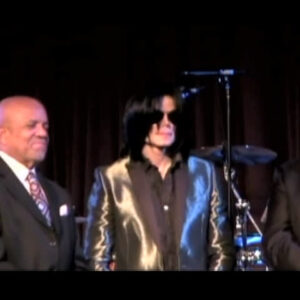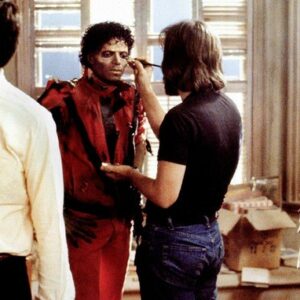Introduction
Aretha Franklin, the “Queen of Soul,” is a monumental figure in the world of music, whose influence transcends genres, generations, and cultures. She was more than just a singer; Franklin embodied a voice that represented resilience, empowerment, and authenticity. Her unparalleled ability to fuse gospel, R&B, jazz, and pop made her one of the most versatile artists of her time. But behind Franklin’s legendary status was a series of key collaborations that shaped the trajectory of her career, allowing her to continuously evolve as an artist while staying true to her gospel roots.
Collaboration has always played an integral role in music production, and for Franklin, working with visionary producers elevated her artistry. From Jerry Wexler’s soul-centric influence to Quincy Jones’ sophisticated jazz touches and Luther Vandross’ contemporary R&B flair, each producer brought something distinct to Franklin’s sound, enhancing her versatility and helping her create timeless records. Through these collaborations, Franklin was able to push boundaries and redefine herself while retaining the essence that made her one of the greatest singers of all time.
Jerry Wexler – The Soul Powerhouse
Jerry Wexler is a name synonymous with Aretha Franklin’s meteoric rise in the late 1960s, particularly after her transition to Atlantic Records. Known for his role in pioneering soul music, Wexler was the driving force behind Franklin’s evolution from a promising talent into an unstoppable musical powerhouse.
Before her move to Atlantic, Franklin had struggled to find her musical identity. Columbia Records had largely positioned her as a jazz singer, but it wasn’t until Wexler tapped into her gospel roots that Franklin’s true potential came to light. Wexler’s production on the 1967 album I Never Loved a Man (The Way I Love You) was a turning point in Franklin’s career, with the title track becoming a smash hit. More importantly, the single “Respect” would not only be a career-defining anthem for Franklin but also a timeless feminist and civil rights anthem.
Wexler’s approach to Franklin was simple yet revolutionary: he gave her the creative freedom to explore the raw, soulful depths of her voice. He understood that her gospel background was key to unlocking the emotion and power that resonated with listeners. Wexler surrounded Franklin with the best session musicians, including members of the Muscle Shoals Rhythm Section, who helped create the driving, gritty sound that became Franklin’s signature. Songs like “Do Right Woman, Do Right Man” and “Dr. Feelgood” allowed Franklin to express both vulnerability and strength, further solidifying her reputation as a voice of the people.
Wexler’s gift was in his ability to balance commercial appeal with deep artistic integrity. He knew how to capture the unfiltered emotion in Franklin’s voice, which became the foundation of her success. Under Wexler’s guidance, Franklin would go on to release some of her most iconic records, including Lady Soul and Aretha Now, further cementing her legacy as the Queen of Soul.
Quincy Jones – A Musical Visionary
Before Franklin’s soul breakthrough with Wexler, she had already crossed paths with another musical legend, Quincy Jones. Known for his work across genres ranging from jazz to pop, Jones helped Franklin explore her versatility during the early years of her career.
During their time together at Columbia Records, Jones produced the 1964 album Unforgettable: A Tribute to Dinah Washington. Franklin was still discovering her sound, and Jones’ jazz background made him the ideal producer to guide her through this phase. While the album did not achieve commercial success, it revealed Franklin’s ability to tackle jazz standards with grace and power. Jones’ meticulous arrangements showcased her capacity to delve into sophisticated, nuanced vocal performances that would later contribute to her crossover appeal.
Jones and Franklin’s collaboration was perhaps best exemplified by the album Hey Now Hey (The Other Side of the Sky), which they worked on after Franklin had established herself as a soul superstar. The album, released in 1973, allowed Franklin to explore new musical directions under Jones’ visionary leadership. Tracks like “Somewhere” highlighted Franklin’s continued exploration of jazz, pop, and soul, blending genres effortlessly and showcasing the full range of her artistry.
Although their partnership did not yield the commercial success of her Wexler collaborations, Franklin’s work with Jones was an important part of her artistic evolution. He encouraged her to experiment beyond her comfort zone, helping Franklin establish herself as not just a soul singer, but a multifaceted artist capable of tackling any genre.
Arif Mardin – Expanding Her Musical Range
If Jerry Wexler helped Aretha Franklin find her voice in soul, Arif Mardin helped her explore the outer limits of her musical abilities. During the early 1970s, Mardin, known for his versatility in blending genres, worked with Franklin to expand her sound, pushing her into uncharted territories of soul, gospel, and R&B.
Mardin’s first major collaboration with Franklin came with the 1972 album Young, Gifted and Black. This album represented a turning point for Franklin, reflecting both the social and political atmosphere of the time. Songs like “Day Dreaming” and “Rock Steady” introduced a more modern R&B sound while retaining the gospel-infused emotion that Franklin was known for. The album was a commercial and critical success, earning Franklin two Grammy Awards and proving her ability to stay relevant as music continued to evolve.
Mardin’s ability to seamlessly blend genres came through again in Spirit in the Dark, another standout album from this period. The title track was a call back to Franklin’s gospel roots, while songs like “Don’t Play That Song” combined soul with pop sensibilities. Mardin had a unique ability to enhance Franklin’s vocal presence by creating lush, expansive arrangements that gave her space to experiment vocally.
The relationship between Mardin and Franklin was marked by mutual respect and creative freedom. Franklin trusted Mardin to push her in new directions without losing the essence of what made her music special. This partnership resulted in some of Franklin’s most innovative work, solidifying her reputation as an artist who could not only adapt but thrive in a constantly changing musical landscape.
Luther Vandross – The 1980s Rebirth
As the music industry entered the 1980s, Aretha Franklin found herself at a crossroads. While still revered as one of the greatest voices of all time, the rise of new musical trends in pop and R&B required her to adapt once again. Enter Luther Vandross, the renowned singer, songwriter, and producer, who helped Franklin navigate this new era with style and grace.
Vandross’ collaboration with Franklin began with the 1982 album Jump to It, which marked a significant departure from the soul-driven sound that had defined her earlier career. Instead, Vandross brought a sleek, modern R&B sound to the table, perfectly suited to Franklin’s powerhouse vocals. The title track became a major hit, reaching No. 1 on the R&B charts and earning Franklin a Grammy nomination. Vandross understood that Franklin’s voice could transcend genres, and he used that knowledge to craft a sound that was contemporary yet timeless.
Their collaboration continued with the 1983 album Get It Right, further solidifying Franklin’s comeback. The album’s title track became another R&B hit, and Vandross’ production showcased a more polished, sophisticated side of Franklin’s voice. Vandross’ influence was clear: he brought a fresh, youthful energy to Franklin’s music while respecting her legacy as a soul icon. Their work together bridged the gap between generations of listeners, ensuring that Franklin’s voice remained as relevant in the 1980s as it had been in the 1960s.
Final Thoughts – The Impact of Collaboration
Throughout her career, Aretha Franklin demonstrated an extraordinary ability to evolve without losing her identity as an artist. This evolution was, in large part, due to her collaborations with some of the greatest producers in music history. Jerry Wexler brought out her gospel-driven soul, Quincy Jones guided her through jazz and pop, Arif Mardin helped her explore new musical landscapes, and Luther Vandross reinvigorated her sound for a new generation.
What made Franklin’s collaborations so impactful was her willingness to trust these producers while maintaining her artistic integrity. Each partnership brought something fresh to her music, but Franklin’s voice and presence always remained at the center. Her adaptability was not only a testament to her talent but also to her understanding of the collaborative nature of music. Franklin’s legacy lives on through the timeless records created with these musical visionaries, reminding us of the power of collaboration in shaping the careers of legends.
Aretha Franklin will forever be remembered as the Queen of Soul, but her reign was strengthened by the collaborative efforts of those who recognized and nurtured her extraordinary talent. From the soulful anthems of the 1960s to the polished R&B hits of the 1980s, Franklin’s music stands as a testament to the power of partnership in creating something truly extraordinary.





